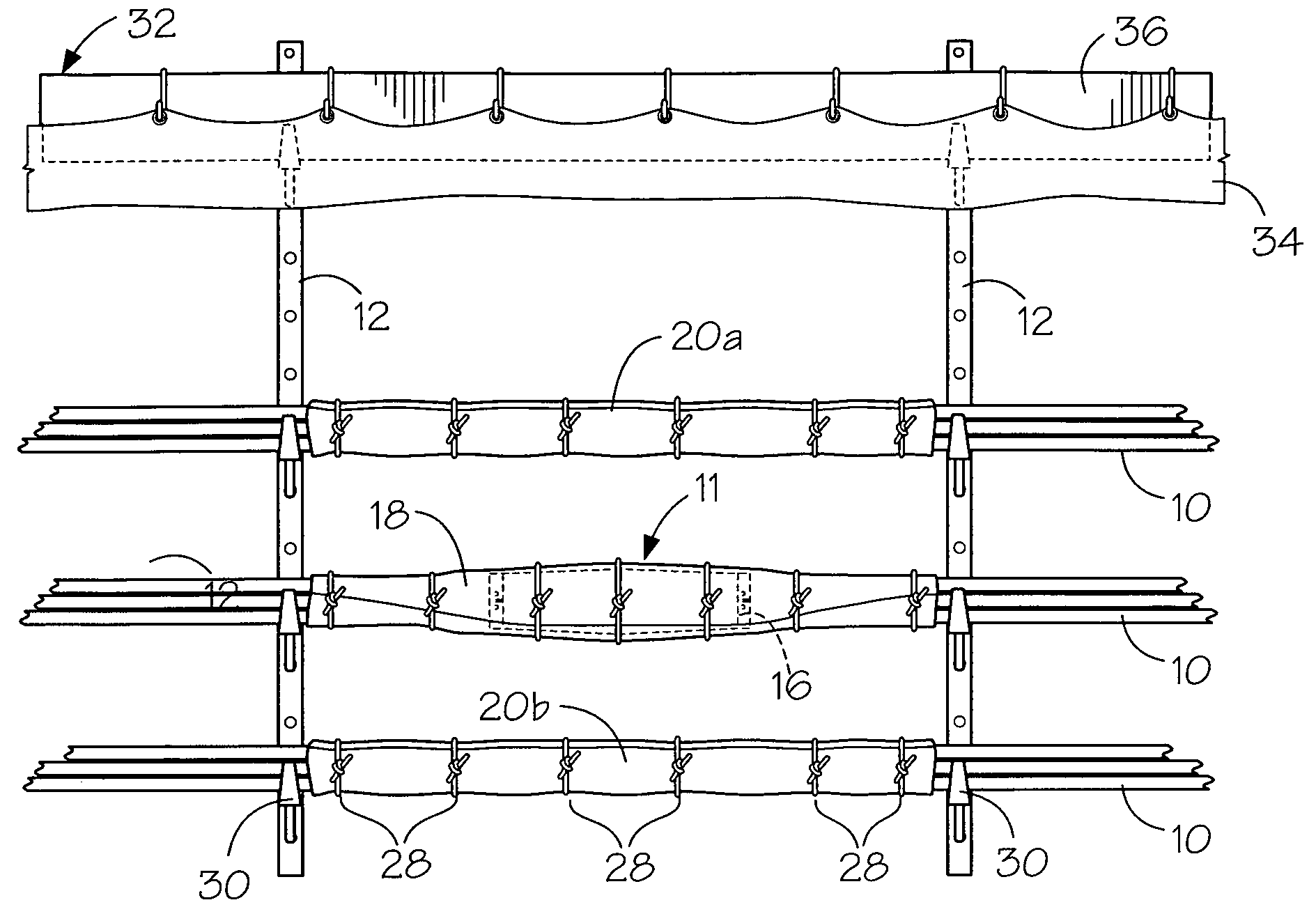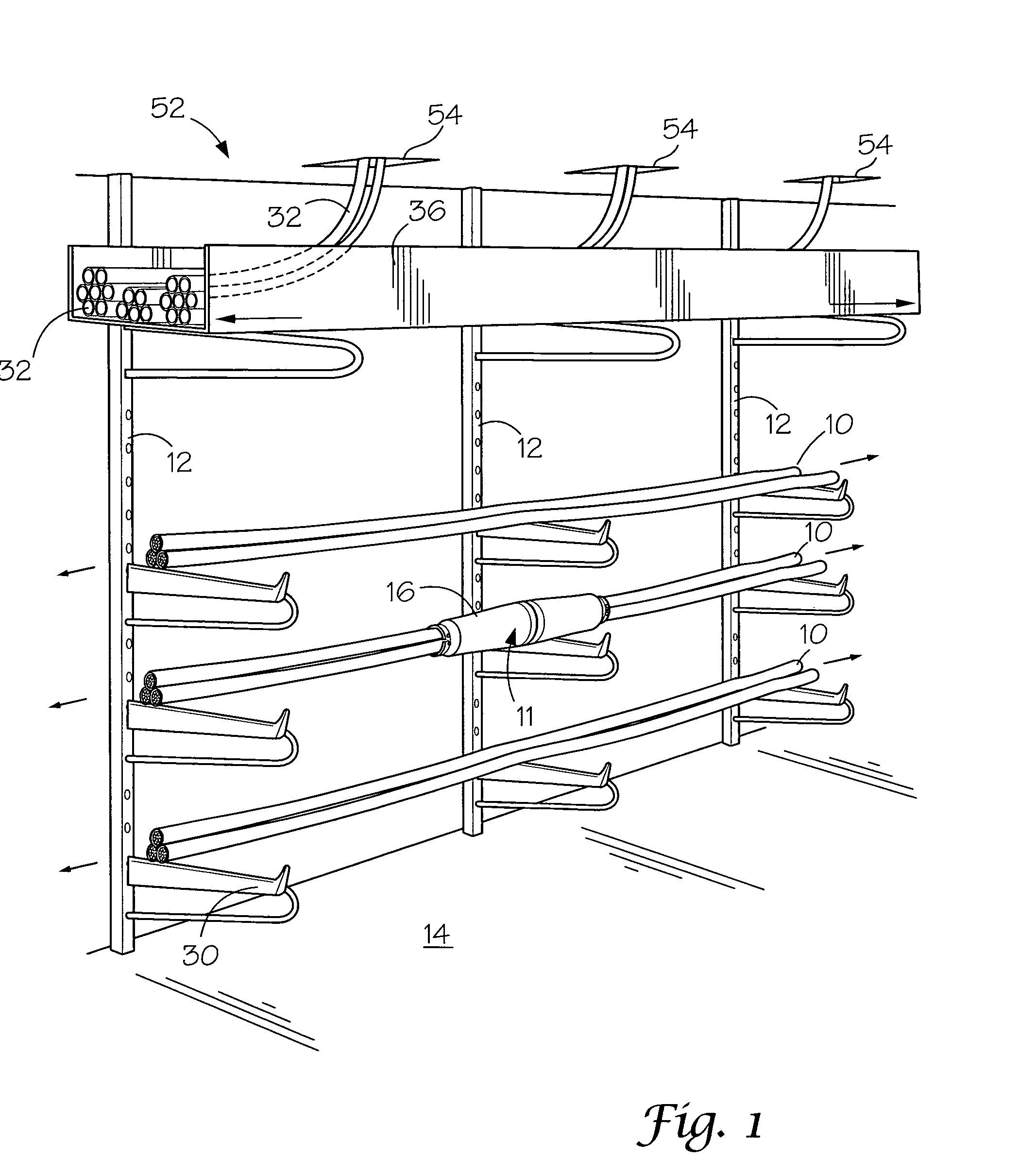Passive fire protection system for energized electric utility facilities and method of installation
a technology for energized electric utilities and fire protection systems, applied in the direction of insulated conductors, cables, conductors, etc., can solve the problems of insufficient protection intended for fire damage, millions of dollars in repair, and current use of techniques and materials to prevent such fire damag
- Summary
- Abstract
- Description
- Claims
- Application Information
AI Technical Summary
Benefits of technology
Problems solved by technology
Method used
Image
Examples
Embodiment Construction
[0044]With reference to the drawings, the invention will now be described in more detail. A comprehensive approach to passive fire protection for high-risk facilities such as electrical power plants and electrical sub-stations is accomplished according to the present invention by providing a system and method that includes the following: 1) fire penetration seals on all cable penetrations through floors; 2) power cable joint protection; 3) control cable protection; and, 4) hatchway cover protection. Together, these passive protection systems combine to provide effective fire containment and management. Each of these areas is described in further detail herein below.
[0045]As part of the comprehensive approach to passive fire protection, it is important to anticipate and protect against overheating and explosions of connections between power cables. When a cable joint, designated generally as 11 (FIG. 1) explodes, fire and molten metal from the cable fault typically knock out adjacent...
PUM
| Property | Measurement | Unit |
|---|---|---|
| depth | aaaaa | aaaaa |
| length | aaaaa | aaaaa |
| depth | aaaaa | aaaaa |
Abstract
Description
Claims
Application Information
 Login to View More
Login to View More - R&D
- Intellectual Property
- Life Sciences
- Materials
- Tech Scout
- Unparalleled Data Quality
- Higher Quality Content
- 60% Fewer Hallucinations
Browse by: Latest US Patents, China's latest patents, Technical Efficacy Thesaurus, Application Domain, Technology Topic, Popular Technical Reports.
© 2025 PatSnap. All rights reserved.Legal|Privacy policy|Modern Slavery Act Transparency Statement|Sitemap|About US| Contact US: help@patsnap.com



